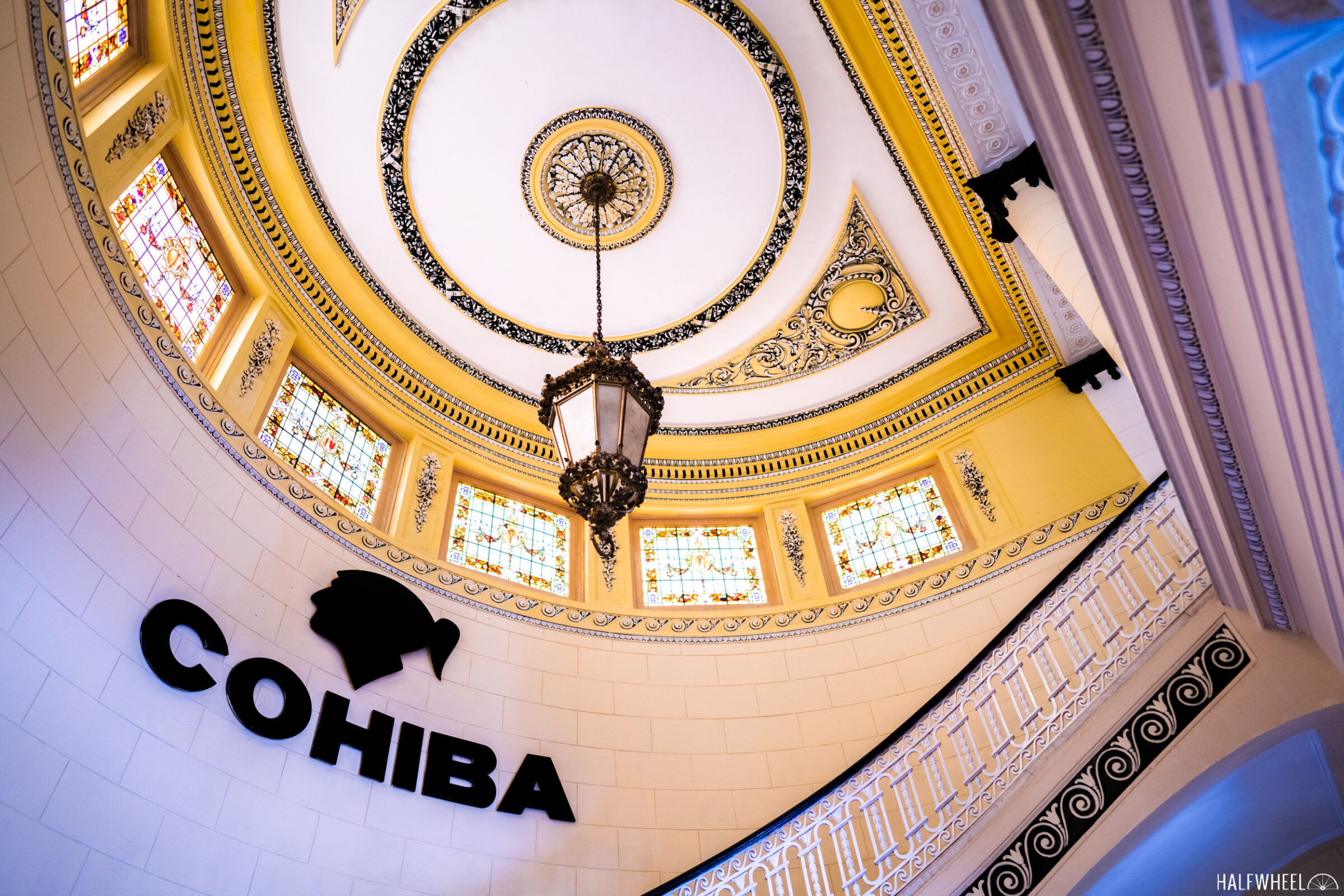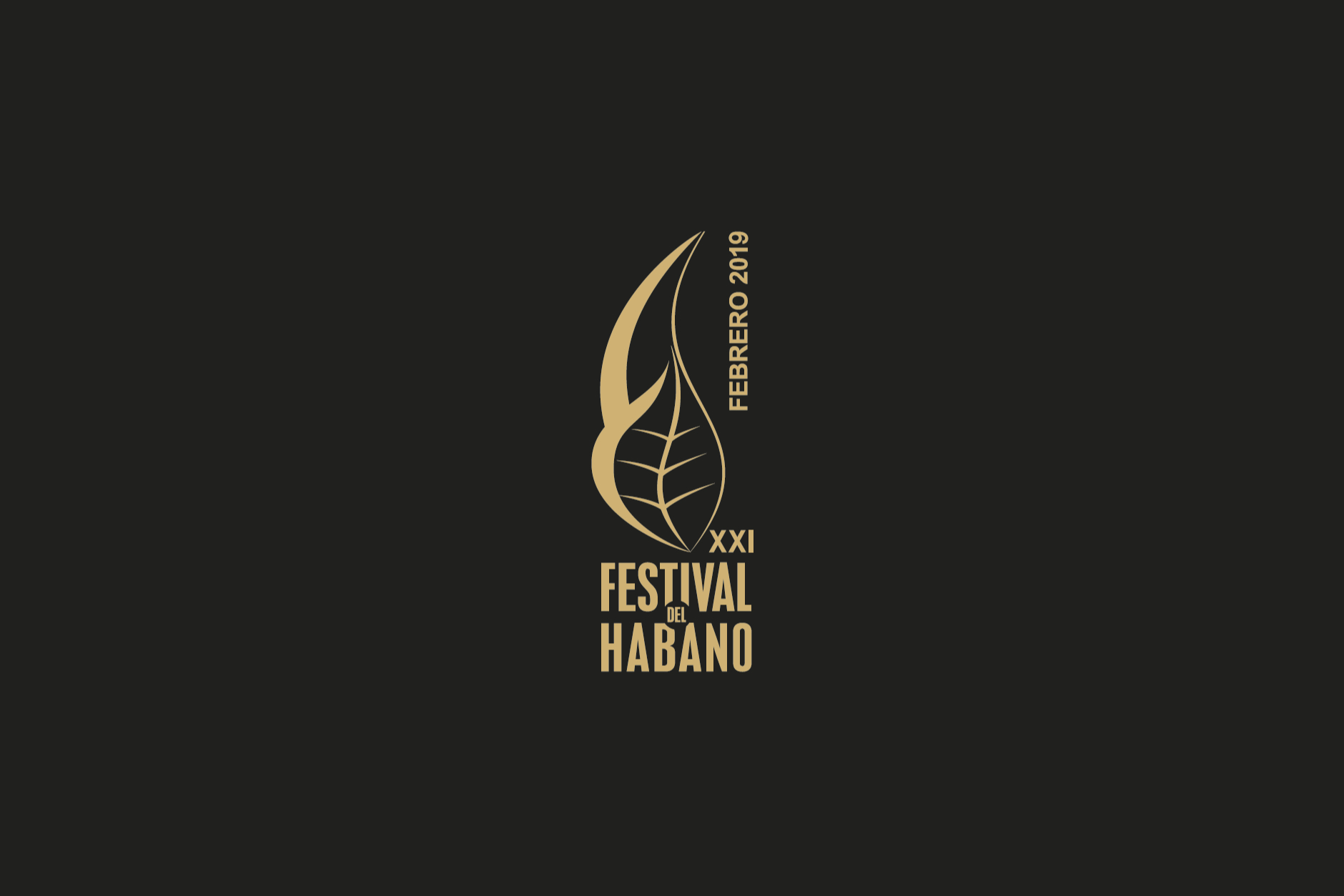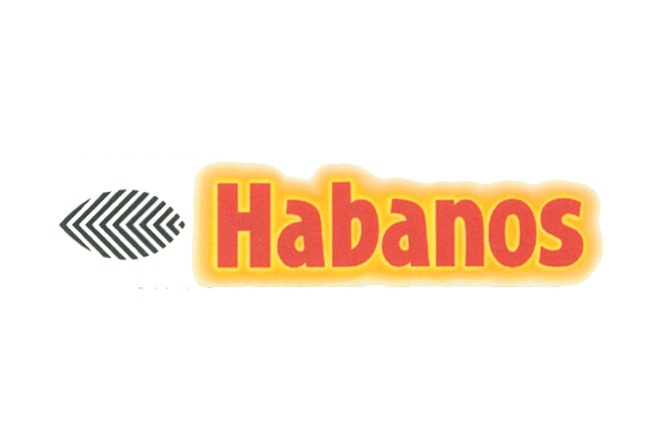Every year during the Festival del Habano, Thursday means a visit to a Cuban cigar factory. This year, the factory that I was assigned to was none other than the legendary El Laguito, where Cohiba cigars are produced.

The factory is named after a small pond in the area, and is a converted mansion that once housed a cigar rolling school for women in the 1960s. The main mansion is part of a bigger complex of buildings built with marble columns and stained glass windows and sits on top of a small hill and features marble columns and stained glass windows, and is surrounded by palm trees and other attractive landscaping. It is easily the most attractive factory I have seen on the island, but most factories in Cuba are concrete buildings, so that is not exactly a surprise.
I have photographed El Laguito at least three times in the past eight years, but this trip was going to be different. We had already been told that there were going to be changes to the cigar rolling class that occurs every year at the festival—it usually takes place on the third day, but had not happened yet—but I was not prepared for just how different things would be this year.
When I arrived on the grounds of the factory, there were already at least 100 people milling around outside of the entrance. After a 45-minute wait, our group was gathered and taken not into the entrance of the factory as expected but down a pathway to a separate building to the left of the factory.
It turns out that instead of holding the rolling class in a large auditorium back at the convention center, where it has taken place every year that I have attended the festival in the past, the group was going to roll their cigars on the grounds of the factory itself, the first time that has happened in the history of the festival. There were five different groups that visited five different factories at the same time—El Laguito, La Corona, Partagás, H. Upmann and Carlos Baliño, which is the former El Ray de Mundo factory—and there were rolling classes held at each of those facilities for attendees.
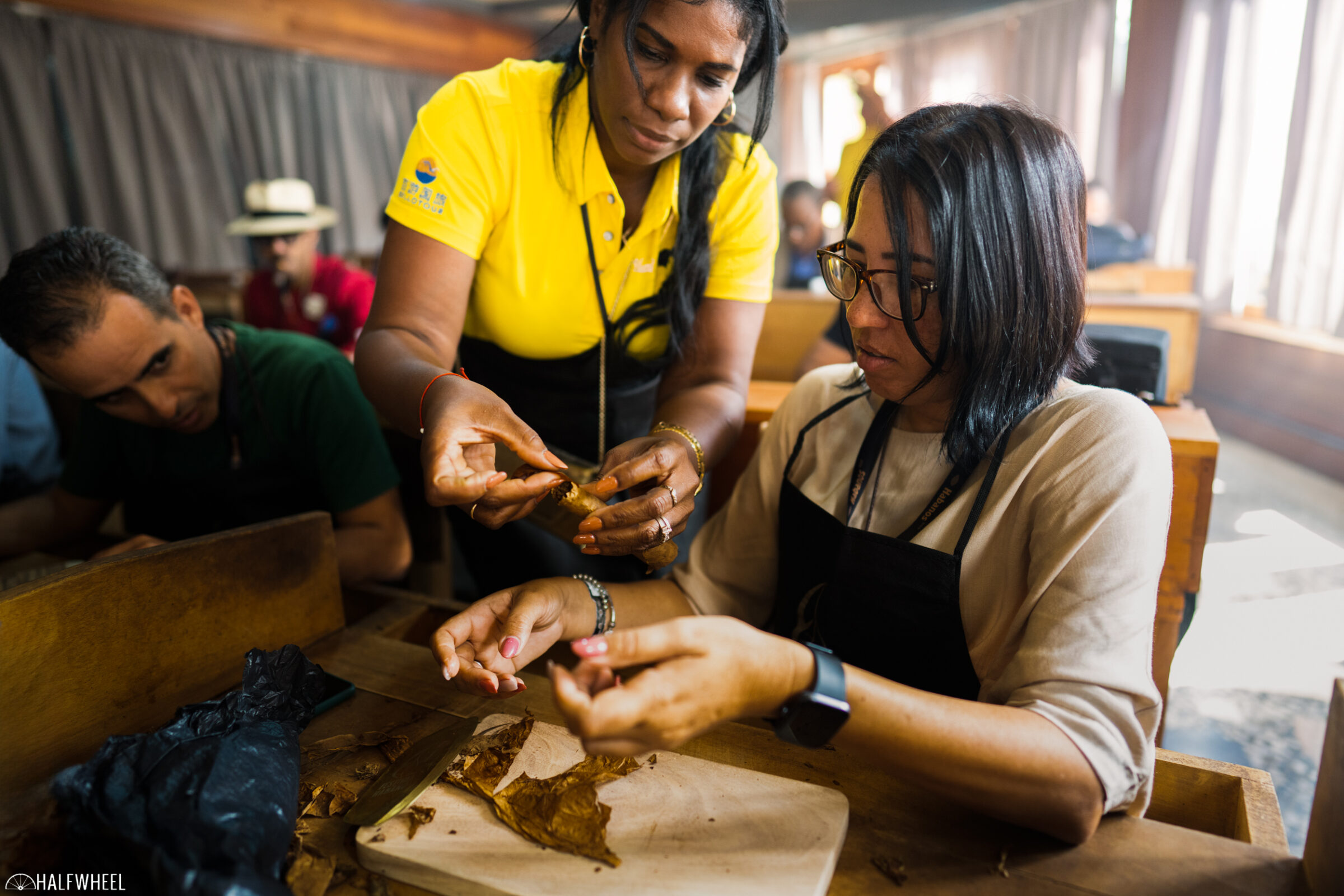
Having said that, other than the location, the rolling class was basically the same as it had been in past years: participants were given tobacco leaves—seco, ligero and wrapper —along with a board, apron and a chaveta to cut the tobacco. The lecturer at the front of the room then went into great detail on how each type of tobacco needed to be bunched or rolled, and her actions were shown on a large screen, allowing people to see her exact actions as she talked about what she was doing.
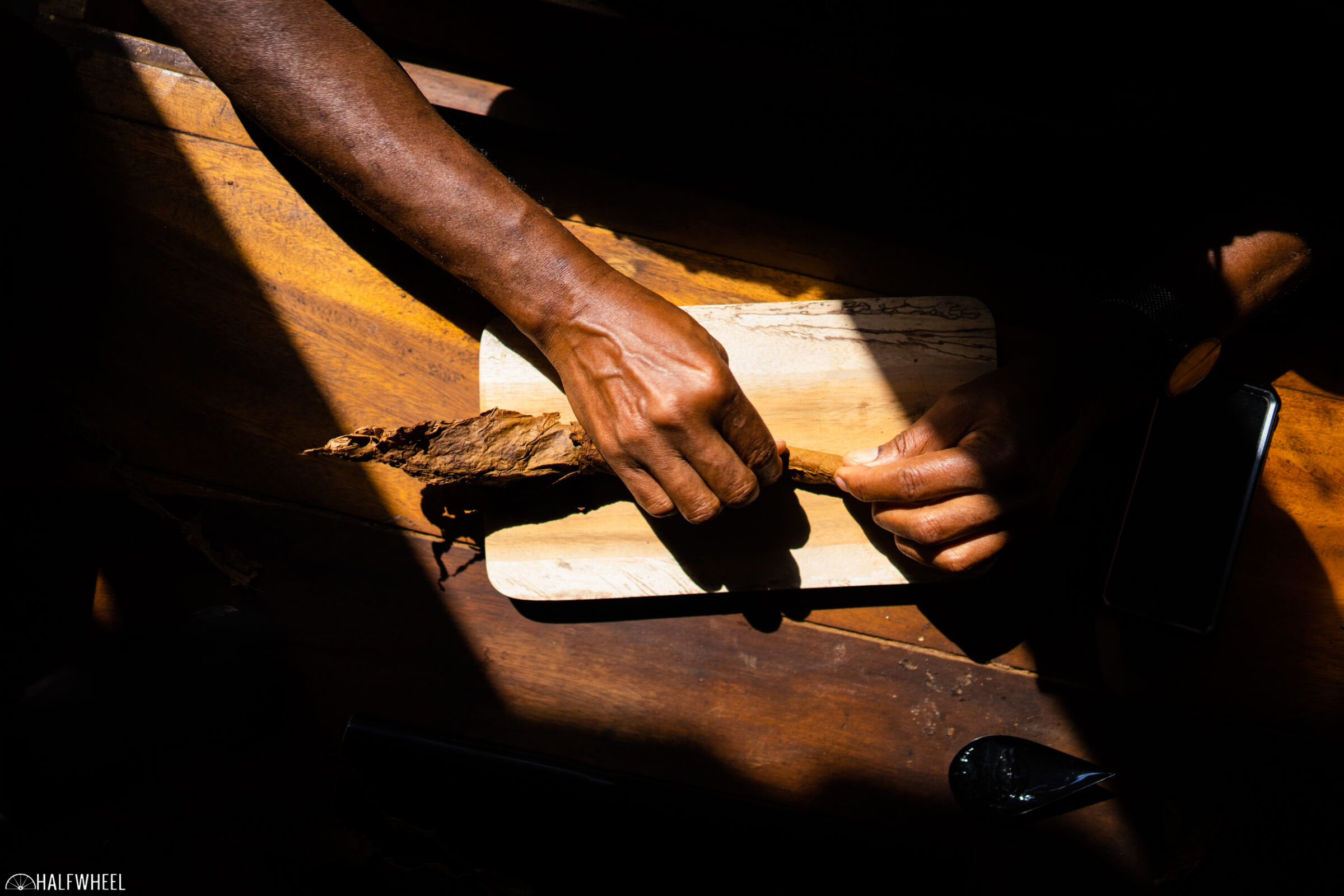
In addition, actual rollers from the factory were on hand to help participants with whichever part of the rolling process they were having trouble with. The rollers were extremely patient, always helpful and always had smiles on their faces, and with their help, most of the participants walked away with a somewhat smokable cigar.
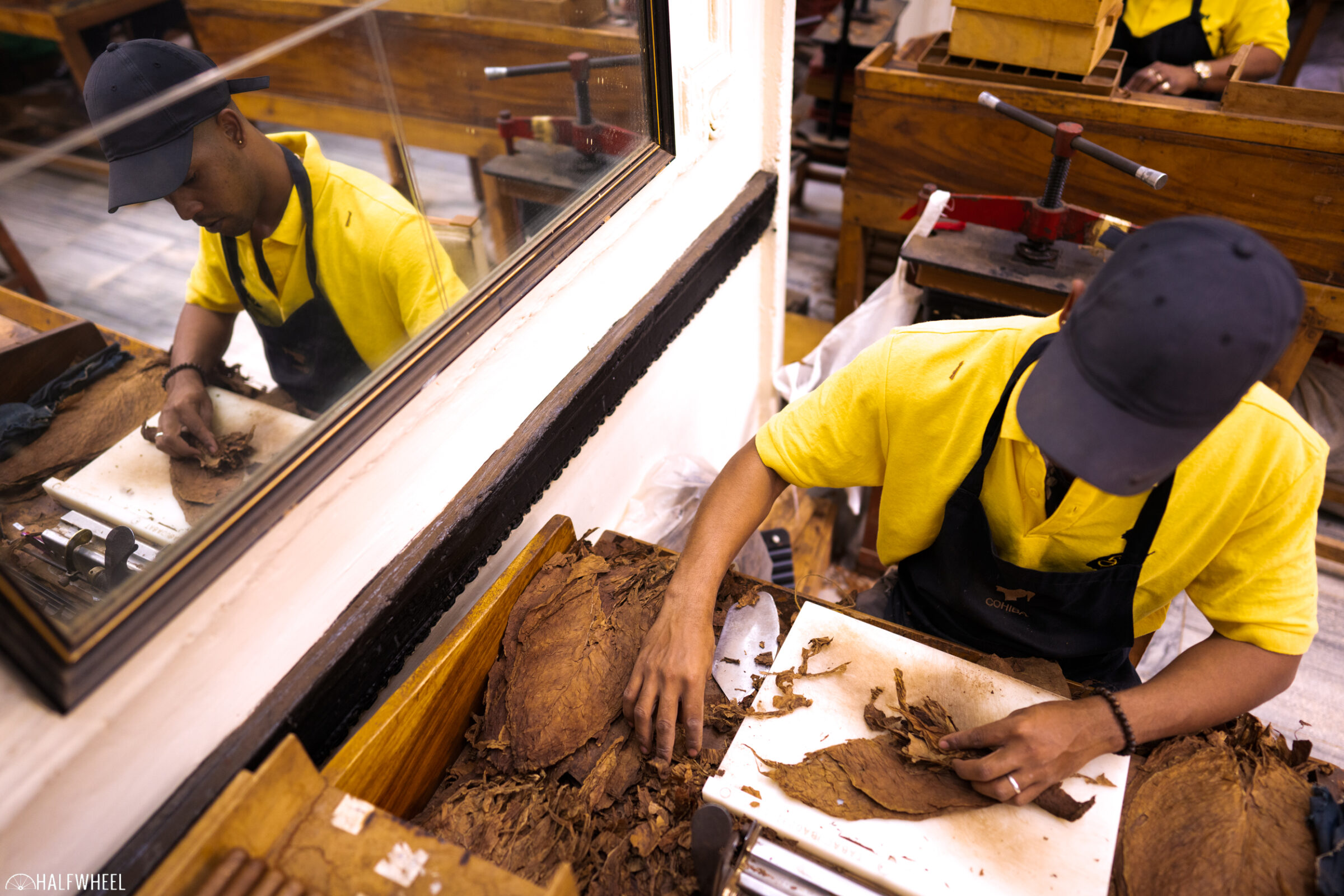
After the rolling class ended, the group was herded like cats to the back entrance of El Laguito to start the “tour.” However, since the factory was originally a mansion, the layout of El Laguito is quite different than just about any other factory in Cuba. Instead of large rolling rooms with dozens of tables, the rollers are located in small rooms that used to be bedrooms, dining rooms, living rooms and even closets.
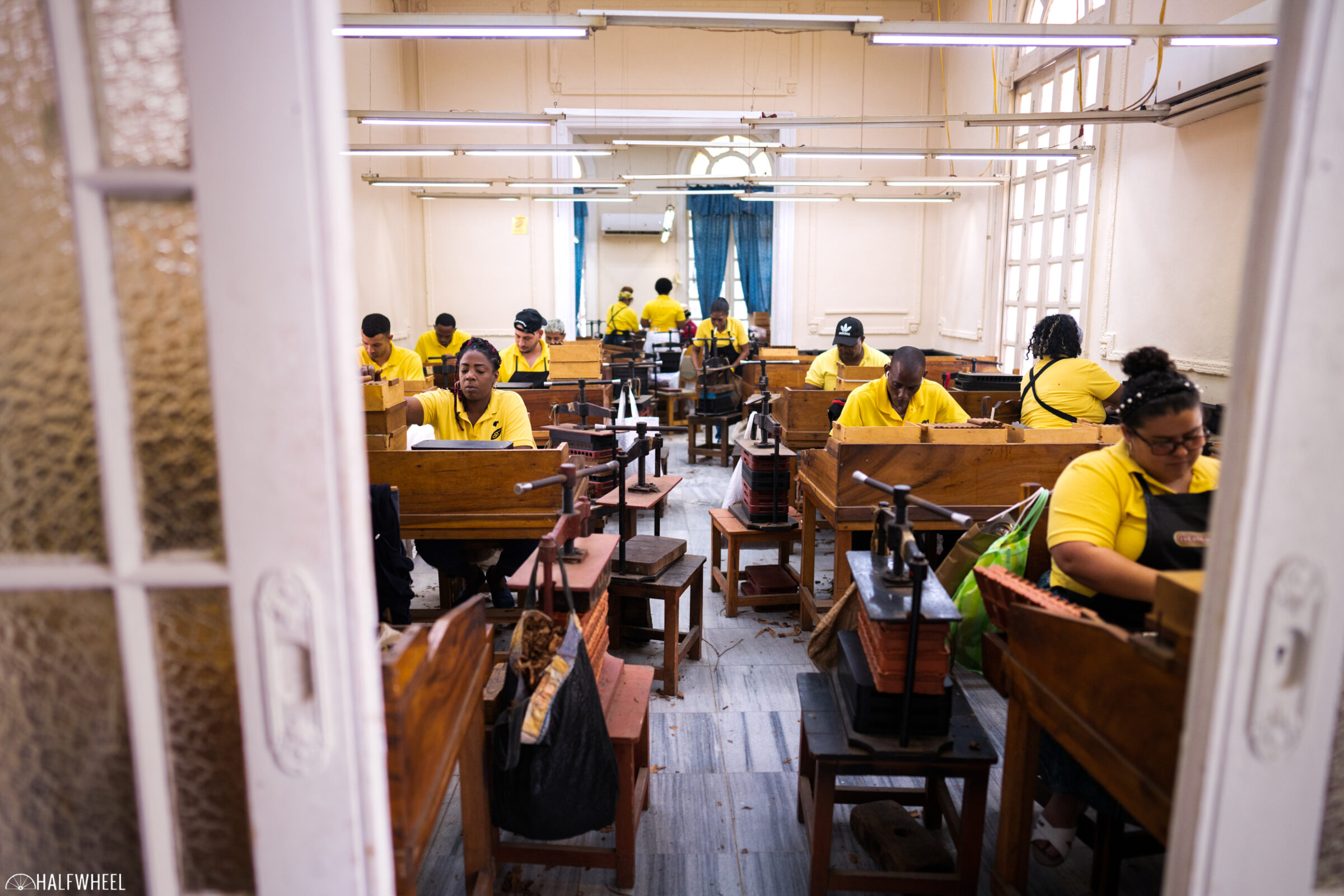
This makes it exceedingly difficult to have an effective and organized tour when the group consists of more than 100 people, as attendees were constantly stopping in the middle of walking lanes—blocking other people from passing—and tripping over various objects when they were not looking. Eventually, the situation turned into a free-for-all, with people going basically anywhere they wanted on both levels.
After about two hours of wandering around, taking photographs and talking to rollers with my limited Spanish, it was time to leave and go back to the house I was staying at, where I quickly changed and got back into the car to go back to the convention center to cover one of the more interesting changes to the festival this year: attendees being able to purchase extras of some of the cigars that were being handed out at the formal dinners.
You may remember that Habanos S.A. surprised everyone attending the Wednesday night dinner during the festival last year by selling boxes of the Bolívar New Gold Medal. In what could accurately described as a frenzy, hundreds of people crowded around a single table, yelling and screaming and waving their credit cards in an attempt to capture the attention of the one person who had a credit card machine so they could buy a couple of boxes of the cigar that—at that time—had not yet been released.

Habanos S.A. officials had told us that they were aware of the issues that occurred last year and that the company had made changes to make sure the process was more streamlined and less hectic. Instead of a free-for-all, special tickets were included with attendee’s festival paperwork that could be exchanged for a limited number of extra sampler boxes for two of the cigars that debuted at the festival this year.
With the ticket, attendees were able to purchase up to two five-count samplers of the Quai d’Orsay Especial d’Orsay for $350 each and two three-pack sampler boxes of the Trinidad 55 Aniversario Robusto Extra for $380 each. Those boxes could then be picked up at the La Casa del Habano store located in the Palco Hotel—right outside of the entrance of the convention center—whenever the purchaser wished. While the line to purchase the cigar samplers was quite long at times, it was also a huge improvement when it came to how orderly the process was, especially when compared to the ordeal that occurred last year.
After that, it was time for dinner, followed by more work until I went to bed around one in the morning, knowing that the next day would include coverage of the Habano World Challenge finals, the Gala Dinner and the humidor auction.

